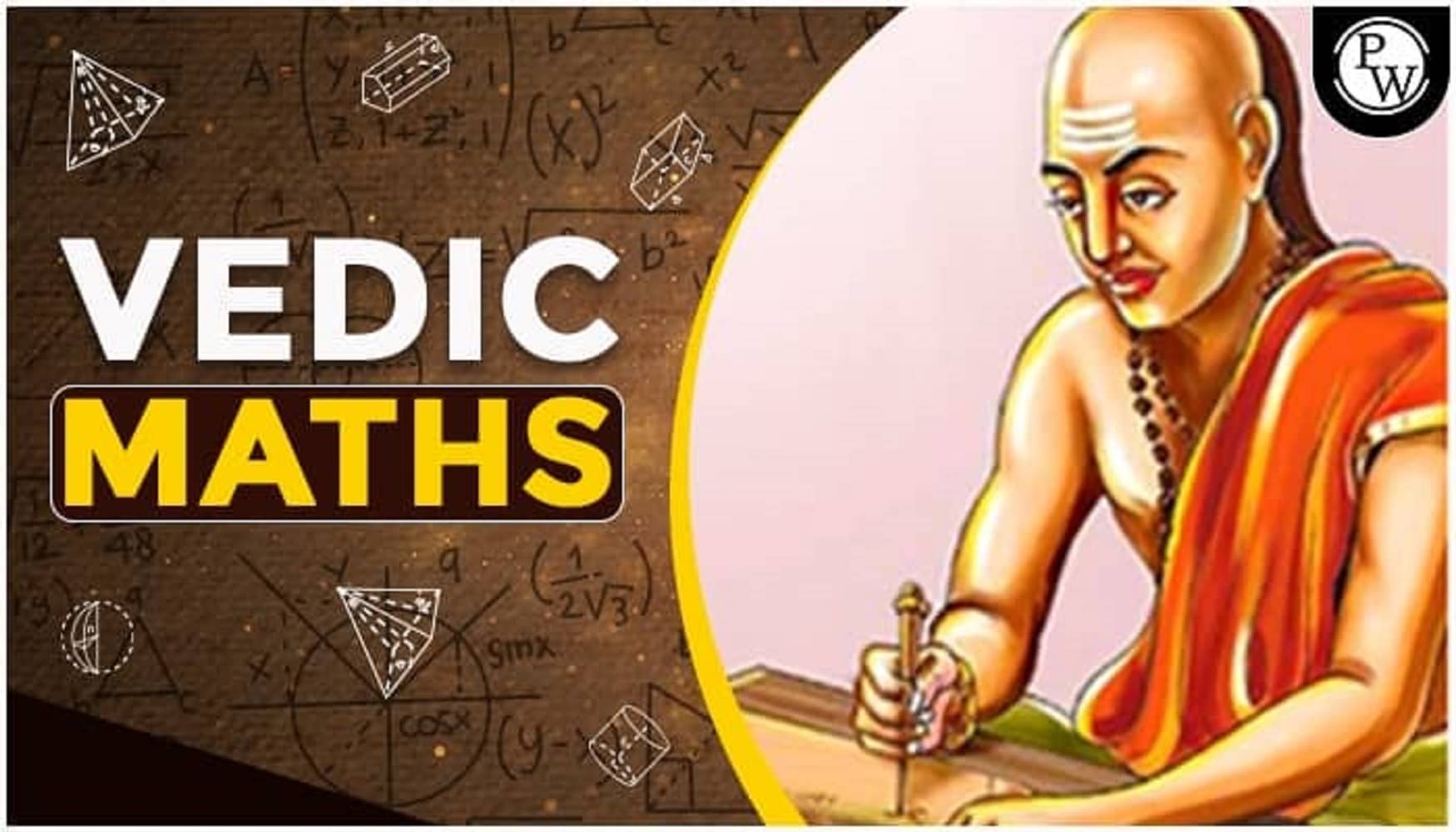Vedic mathematics : The Unparalleled Contribution of Hindu Thinkers to Mathematics Explore the historical roots and fascinating origins of Vedic mathematics, uncovering the wisdom of ancient mathematicians in this insightful exploration. Dive into the past to enhance your understanding of mathematical evolution.
A Glimpse into the Rich Heritage of Indian Mathematics
The practice of mathematics in the Indian subcontinent has a long and illustrious history, dating back to the Vedic period. The word “Ganita” means “the science of calculation,” and it is considered one of the major branches of science in Hinduism. The question of when and where mathematics began is a complex one, and there is no definitive answer. However, there is evidence to suggest that high-quality mathematics was being practiced in India as early as the Indus civilization, around 3500 BCE. This makes India one of the oldest civilizations to have developed a sophisticated system of mathematics.
Many argue that Egypt is the birthplace of mathematics, yet there is controversy over this claim. During that time, India, along with Babylon and China, also had advanced mathematical practices, supported by ample evidence. Scholars often assert that India is the true origin of mathematics, with the Indus Civilization considered the earliest period of mathematical development on Indian soil.
The inscriptions in the remains of the Indus civilization, discovered around 3500–3300 BC, have not been deciphered, leaving the true nature of their mathematics unknown. However, signs in the ruins suggest that the mathematical knowledge of these valley dwellers was quite advanced.
While there is dispute over whether Indian mathematics is the oldest, it is undeniable that it is not behind Egypt, Sumer, or China. Mathematics has been practiced in India since the Vedic period, where Vedic sages’ thorough practice laid the foundation for Indian astronomy. The Vedic age relied on the decimal system, with calculations mainly done in that system.
Vedic mathematics The Vedic Period: The Foundations of Indian Mathematics
The Vedic period (c. 1500–1000 BCE) is considered to be the golden age of Indian mathematics. The Vedas, a collection of sacred Hindu scriptures, contain many mathematical concepts, including the decimal system, zero, and the concept of negative numbers. The Vedas also describe methods for solving linear and quadratic equations and calculating the areas and volumes of various geometric shapes.
The Golden Age of Hindu Mathematics
A few of the most famous ancient Vedic mathematicians are:
Baudhayana: Known for his work on geometry, Baudhayana is credited with the Baudhayana Sulba Sutra, which contains mathematical principles related to constructing sacrificial altars.
Apastambha: Another ancient mathematician, Apastambha, contributed to the field with the Apastamba Sulba Sutra, a text that also deals with geometric principles in the construction of altars.
Manava: His work, the Manava Sulba Sutra, is another important contribution to geometry and contains mathematical rules for altar construction.
Katyayana: An ancient Indian mathematician and grammarian, Katyayana’s work extended to various branches, including mathematics.
Maitrayani: Known for the Maitrayaniya Upanishad, Maitrayani may have also made contributions to mathematical thought during the Vedic period.
Varaha Mihira: Although he belongs to a slightly later period (around the 6th century AD), Varaha Mihira made significant contributions to astronomy and mathematics. His work, the ‘Panchasiddhantika,’ discusses various aspects of astronomy, including mathematical calculations.
Aryabhata (476–530): Aryabhata, an ancient Indian astronomer and mathematician, is renowned for his work ‘Aryabhatiya,’ where he provided solutions to quadratic indeterminate equations and precise values of π. He also introduced a method for finding square roots.
Brahmagupta (588–660), another influential mathematician, made notable contributions such as discovering the formula for determining the volume of a pyramidal frustum. His work ‘Brahmasphutasiddhanta’ covers advancements in arithmetic, algebra, and geometry, including rules for solving quadratic equations.
Most of these sources were discovered between 800 and 200 B.C. The oldest of which is the Buddhayana. Interestingly, similarities between the Pythagorean formula and the Pythagorean aria have been noted in Apastamvya and Baudhyana.
The period from the 5th to the 12th centuries CE was another golden age for Indian mathematics. Two of the most important mathematicians of this period were Aryabhata and Brahmagupta. Aryabhata was a renowned astronomer and mathematician who made significant contributions to the fields of trigonometry and calculus. He is credited with developing the concept of zero as a placeholder in the decimal system and with inventing the method of finding square roots. Brahmagupta was a mathematician and astronomer who made important contributions to the fields of algebra and geometry. He is credited with developing the Brahmagupta theorem, which is a formula for determining the area of a cyclic quadrilateral.
Numbers found in Yajurveda Samhita, such as Arbud (10000000), Narbud (100000000), Samudra (100000000), and Parardha (10000000000), indicate that Hindu mathematicians had a grasp of large numbers unimaginable to contemporary nations.
Consideration of two series of numbers—1,3,5,…,99 and 24,48,96,192,…,393216—known as parallel progression and multiplicative progression is mentioned in ‘Taittiriya Samhita’ and ‘Panchabinsha Brahmana.’ ‘Shatpatha Brahmana’ introduces geometrical knowledge.
The existence of various geometrical shapes, such as quadrilaterals and squares, has been observed in Baudhyana. There are also methods for converting the area of a specific geometric field to the area of another geometric field . Another surprising thing is that this formula also tells how to calculate the value of √2 very accurately, which we know from the history narrated by Panini.
Barahamihira ( early sixth century), Galsna (early sixth century), Bhaskara (late sixth century), Mahaviracharya (ninth century), Sridhara Acharya (eleventh part of the century), Sripati (eleventh century), Bhaskaracharya (twelfth century), etc. Hindu mathematics once again strengthened its place in the world assembly.
The most significant contribution of Hindu thinkers to mathematics is the decimal system of arithmetic and the discovery of ‘zero’. However, earlier, the use of zero can be observed in Pingal’s ‘Chandasutra’ in 200 BC. The book ‘Aryabhatiya’ written by Aryabhata mentions solutions to quadratic first-degree indeterminate equations and exact values of π . Aryabhata also invented the method of finding square roots.
Without talking about Bhaskar, this writing will remain incomplete. The famous book written by him is ‘Siddhanta Shiromani’, completed in four parts. In the first two parts, Lilavati and Algebra, various topics of arithmetic and algebra have been discussed.
“A negative number multiplied by another negative number gives a positive number, and a negative number multiplied by a positive number gives a negative number.” This conclusion of algebra was discovered by Bhaskar. Students of mathematics are aware of the formula “x=(-b±√(b^2-4ac))/2a”. The name of its inventor is Sridhar.
This formula for determining the magnitude of a quadratic equation is known as ‘Sridharacharya’s Theorem’. So much for arithmetic and geometry. Then trigonometry. The success of Hindus in trigonometry is also undeniable. Varahamihi has shown the values of sin30 and sin60 in his book ‘Panchasiddhantika’. The basic formulas used in modern trigonometry were also discovered by Varahamihira.
In Vedic rituals, the ‘Mahabedi,’ shaped like an isosceles trapezium, was used. Hindus were aware of its area and side-height relationships, as well as negative numbers. The Sanskrit sutra ‘Shulva Sutra’ was used for making altars with different shapes, each symbolizing distinct aspirations.
Important sources from the Vedas, discovered between 800 and 200 BC, include Apastamvya, Baudhayana, Manava, Katyayana, Maitrayani, Varaha, Badhula, and Hiranyakesh. Similarities with the Pythagorean formula were noted with Apastamvya and Baudhyana.
After about 1000 years without significant contributions, Hindu mathematics regained prominence with figures like Aryabhata, Brahmagupta, and Bhaskara. Their contributions include the decimal system, the concept of ‘zero,’ and solutions to quadratic equations.
Bhaskara’s ‘Siddhanta Shiromani’ discussed arithmetic and algebra, including the concept that a negative number multiplied by another negative number gives a positive number.
Sridharacharya’s Theorem, determining the magnitude of a quadratic equation, is known as ‘Sridharacharya’s Theorem.’ Hindu success in trigonometry is evident in Varahamihira’s ‘Panchasiddhantika,’ showcasing values of sin30 and sin60.
The Legacy of Indian Mathematics ( Vedic mathematicians )
Indian mathematics has had a profound impact on the development of mathematics in other parts of the world. The decimal system, zero, and the concept of negative numbers were all introduced to the West by Arab mathematicians who had learned them from Indian scholars.
When you read the Islamic Holy Book Quran, written in Arabic, the text is written right to left, but the chapter and verse numbers are read left to right as per Sanskrit. Example: Chapter 15 means 15 (left to right), not 51, which is right to left. It is because Arabs received the Hindu number system from India and used it in the Islamic holy book, the Quran.
Indian mathematics has also made significant contributions to the fields of trigonometry, calculus, and algebra.
Conclusion
The rich heritage of Indian mathematics is a testament to the intellectual brilliance of Hindu thinkers. Indian mathematicians have made significant contributions to the development of mathematics, and their work has had a profound impact on the world.
In our Hinduism, mathematics and its greatness cannot be overstated. Thousands of years ago, a fusion of geometry, mathematics, and religion occurred in the Indian subcontinent, demonstrating the richness of Hinduism during the Vedic period. This period focused on religious practices involving mathematical properties, inspiring mathematicians and priests.
The unparalleled contributions of Hindu thinkers to mathematics are a source of inspiration. Sanatan Dharma’s foundation on the path of knowledge is a testament to its enduring impact on the world.Vedic mathematics Vedic mathematics Vedic mathematics Vedic mathematics
- Boyer, Carl B. (1991). A History of Mathematics (Second Revised Edition) New York: John Wiley & Sons, Inc.Vedic mathematics
- Bronkhorst, Johannes (2001). The Indo-Aryans: Their Language, Culture, and Origin Archaeological Survey of India.Vedic mathematics
- Pingali, Sudhakar (2004), The Mathematics of the Chandastra, New Delhi: Motilal Banarsidass.Vedic mathematicians Vedic mathematics



